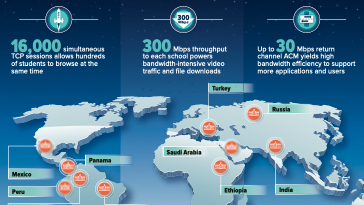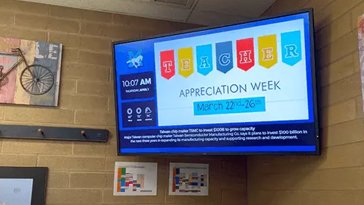Distance Learning Solutions with Satellite Internet
Empower students, teachers and educators around the world with access to satellite connectivity and digital distance learning solutions.
For students across the globe, access to the internet is no longer a luxury – it’s a necessity. Digital services are equally imperative for teachers and administrators for professional development, homework assignments, school news and updates, emergency communications and community-building.
Satellite Internet for Schools: In rural and remote communities without terrestrial broadband, Hughes delivers the satellite connectivity schools need – and that often serves as Wi-Fi hotspots for the local community outside of school hours.
Approximately 50,000 schools around the world rely on Hughes JUPITER™ System equipment for quick and efficient school internet connectivity. Across Latin America – including in Peru – we offer schools an integrated solution combining our high-throughput Ka-band JUPITER satellite capacity with on-site equipment and network management. View our infographic for more details.
Digital Signage: With Hughes University Digital Signage, schools mount screens throughout their campuses to deliver dynamic and real-time information to student, faculty, staff and visitors, as well as for instant emergency communications. Watch how one elementary school resolved parent and faculty communication issues by implementing digital signage.
Distance Learning Solutions: Satellite transport enables distance learning around the world, including the Hughes Global Education platform which, to date, has delivered interactive training courses to more than 25,000 students across India. Hughes MediaTrainingTM is a turnkey, cloud-based training system with online and offline capabilities.
For over a decade, Hughes has powered the Government Education and Training Network (GETN) distance learning program via a fully managed, global satellite network.
For more information about custom or ‘off-the-shelf’ connectivity solutions in your school or university, contact us today.
Related Resources






